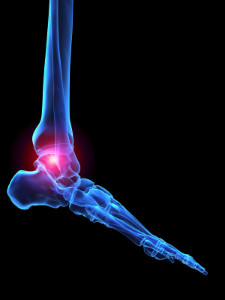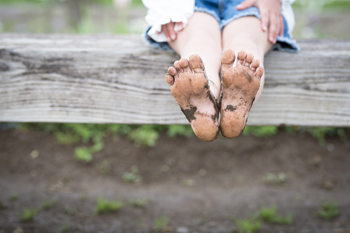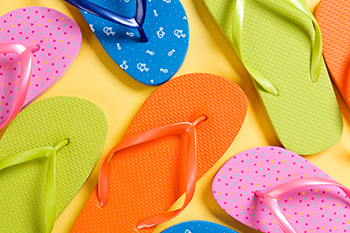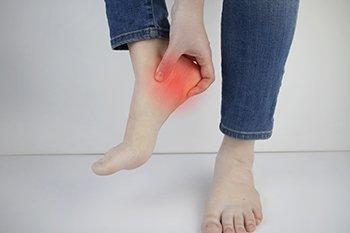
There are many jobs that require standing, walking, and working on the feet for the majority of the day. This can cause foot pain to develop. The feet are the foundation of the body, and it is necessary to take proper care of them. There are effective ways to help the feet to feel good and possibly avoid foot problems. These include wearing shoes that fit correctly. Many people choose to wear a shoe that is laced, which generally makes it easier to see how well the shoe fits. When insoles are added to the shoes, they may provide additional support and cushioning to get through a long day at work. Bacteria and fungal infections may develop as the shoes are worn, and it is important to wash and dry the feet thoroughly at the end of every day. People who lead a healthy lifestyle and drink plenty of fresh water may have diminished foot pain as a result of avoiding dehydration. Wearing compression socks may help to increase circulation in the legs and feet and avoid swelling and discomfort. For more information about how to keep your feet healthy while working, please confer with a podiatrist.
While working on the feet, it is important to take the proper care of them. For more information about working on your feet, contact one of our podiatrists from Foot & Ankle Centers of Charlotte County . Our doctors will treat your foot and ankle needs.
Working on Your Feet
Standing on your feet for long periods of time can cause stress and pain in your feet. Your whole body may experience change in terms of posture, back pain, bunions, callouses and or plantar warts. There are ways to avoid these conditions with proper foot care, smart choices and correct posture.
Positive Changes
Negative heeled shoe – Choosing this shoe type places the heel slightly lower than the ball of the foot. These are great for overall foot health. Find shoes that fit you correctly.
Go barefoot – Our feet were not designed to be enclosed for all hours of the day. Try to periodically expose your feet to air.
Eliminate Pain
Foot Exercises – Performing simple exercises, incorporating yoga and doing stretches are beneficial. This will allow increased blood flow to the area and muscles of the foot.
Achilles tendon – Stretching the foot out flat on the floor will relax the calf muscles and tendon. These exercises can be performed almost anywhere. Make sure you add these exercises to your daily regimen.
With a little bit of this information and knowing more about foot health, you will notice changes. Foot stretches and proper footwear will help with pain and prevent further issues.
If you have any questions please contact our offices located in Punta Gorda and Port Charlotte, FL . We offer the newest diagnostic and treatment technologies for all your foot and ankle needs.









